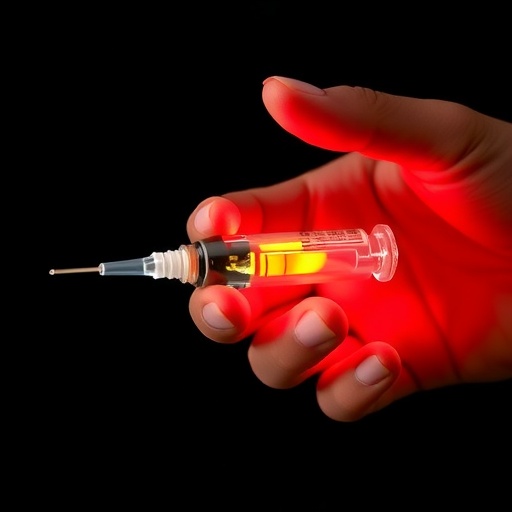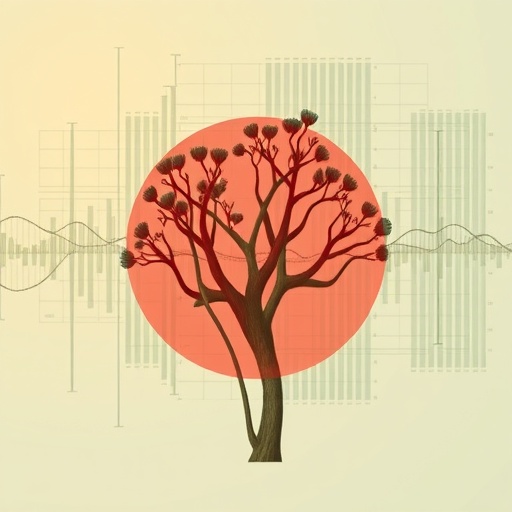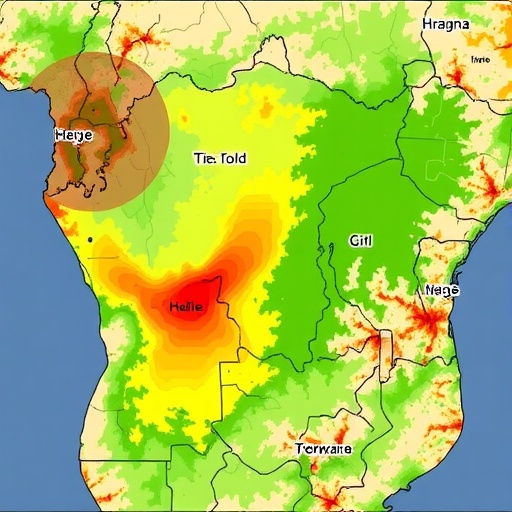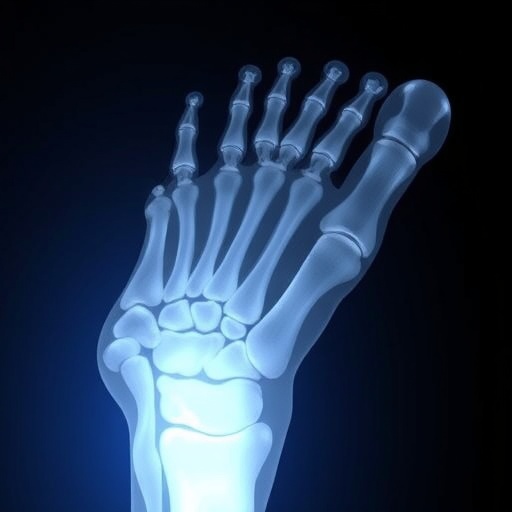PROTECT YOUR DNA WITH QUANTUM TECHNOLOGY
Orgo-Life the new way to the future Advertising by AdpathwayPredicting the dynamics of infectious disease outbreaks within localized microenvironments remains a formidable challenge, demanding sophisticated modeling frameworks that marry biological, social, and environmental factors. Traditional epidemiological approaches often rely on simplifying assumptions that limit their applicability in complex, small-scale settings such as gyms, cafeterias, or other social venues where infection transmission can be highly heterogenous. As research pushes the boundaries of predictive capabilities, a promising approach emerges that captures the intricacies of social structure, human behavior, and spatial configuration in a unified stochastic microexposure model.
At the heart of infection risk lies the nature of human interactions, which tend to be highly clustered. Individuals usually maintain a relatively stable core network comprising family, friends, and co-workers, while sporadic interactions with strangers or casual acquaintances occur much less frequently. This non-homogeneous contact pattern introduces essential complexities into disease transmission pathways that traditional compartmental models, such as SIR (susceptible-infected-recovered), fail to fully capture. Thus, refining predictions necessitates integrating detailed knowledge of social networks alongside environmental occupancy patterns—an endeavor that underpins the latest modeling innovations.
One of the critical limitations of prior models is their scalability. Approaches designed for small populations offer a close-up lens on individual interactions but often lack sufficient statistical power to generalize findings across different settings or time frames. Conversely, models calibrated for large populations deliver broad, population-level forecasts but struggle to represent microenvironment details key for understanding localized outbreak dynamics. Novel stochastic frameworks address this gap by incorporating probabilistic exposure assessments that can flexibly scale to suit the level of granularity required, from intimate indoor clusters to more expansive public spaces.
The geometry and occupancy of physical spaces play a fundamental role in infection risks, dictating how airborne particles disperse, surfaces are contaminated, and interpersonal distances fluctuate. Microenvironments such as gyms, cafeterias, and classrooms each possess unique spatial and usage patterns, shaping the probabilities of transmission. By embedding spatial data and occupancy metrics into stochastic models, researchers can simulate real-world scenarios with higher fidelity. This integration not only enables a clear evaluation of infection hotspots within confined spaces but also informs targeted interventions to mitigate spread without resorting to overly broad restrictions.
Behavioral and professional patterns further compound the complexity of outbreak modeling. Daily routines often involve repeated exposure to the same places and people, resulting in structured contact networks where infections can percolate through repeated, sustained interactions. Simultaneously, unexpected encounters during transit or errands contribute stochastic perturbations in these networks. The most advanced models now incorporate these overlapping layers of interaction, recognizing that both routine and random contacts collectively shape the probability landscape of infectious transmission and outbreak propagation.
A cornerstone of the new stochastic microexposure model is its capacity to harness detailed societal structure. This means recognizing how sociodemographic factors such as household composition, occupational roles, and social behavior coalesce to influence transmission probabilities. For instance, a crowded cafeteria frequented by diverse employee groups presents different risks compared to a gym where membership demographics are more homogeneous. Such nuances are critical for tailoring public health responses that balance controlling infection risk with maintaining social function and economic vitality.
The stochastic nature of the model reflects the inherent uncertainties and variability present in real-world scenarios. Unlike deterministic models that yield fixed predictions, stochastic models produce distributions of probable outcomes, reflecting the complex interplay of chance, individual variation, and environmental factors. This probabilistic approach enables policymakers to understand a range of likely outbreak trajectories and to prepare for best- and worst-case scenarios with greater confidence.
Crucially, applying this model in socially structured populations acknowledges that infection dynamics are rarely driven by random mixing. Instead, they emerge from interwoven webs of repeated interactions, super-spreading events, and occasional cross-cluster infections. Incorporating stochastic microexposure at multiple scales allows for the quantification of how infection pulses traverse social clusters and occasionally leap through long-range contacts, providing deeper insight into mechanisms that precede explosive outbreaks.
The practical implications for infection risk assessment are profound. By accurately quantifying exposure risk at a micro level, public health officials can optimize resource allocation, prioritize high-risk venues for surveillance and intervention, and design mitigation strategies that minimize disruption. For example, rather than imposing blanket closures, venue-specific occupancy limits or timed access strategies might effectively reduce transmission probabilities while preserving essential activities.
Moreover, this enhanced modeling framework can be pivotal during the emergence of novel pathogens or variants when empirical data remain sparse. By simulating plausible transmission scenarios grounded in detailed social and spatial characteristics, health authorities gain early warning capabilities and can rapidly evaluate intervention impacts before large-scale outbreaks materialize.
The stochastic microexposure model also opens doors for integrating real-time data streams such as mobile device proximity logs, environmental sensor readings, and social media signals. Leveraging these data inflows could refine exposure assessments dynamically, adapting to shifting behaviors and conditions. Such integration heralds a new era of precision epidemiology where outbreak predictions and responses are continually calibrated to the evolving landscape.
Beyond immediate infection control, understanding microenvironment dynamics contributes to broader public health goals, including designing safer built environments. Architects and facility managers can benefit from the insights offered by the model by adopting spatial arrangements and ventilation strategies that inherently reduce transmission potential. This proactive approach translates epidemiological insights into tangible improvements in indoor safety standards.
Despite these advances, challenges remain in parameterizing and validating complex stochastic models. The need for high-resolution social and environmental data poses logistical hurdles, and uncertainties in behavioral responses to interventions can introduce variability in outcomes. Continued interdisciplinary collaboration between epidemiologists, social scientists, data modelers, and public health practitioners is essential for refining model robustness and applicability.
In conclusion, the development of a stochastic microexposure model tailored for socially structured populations represents a significant leap forward in infection risk assessment. By marrying population structure, environmental geometry, and behavioral complexity into a coherent probabilistic framework, researchers provide a powerful tool to understand and anticipate outbreak dynamics within microenvironments. This nuanced perspective is vital as societies grapple with ongoing infectious threats and seek evidence-based strategies to safeguard public health while minimizing societal disruption.
As infectious diseases continue to challenge global health, refining the precision and relevance of predictive models at local levels remains paramount. The work of Vecherin, Meyer, Cummings, and colleagues represents a promising blueprint for the next generation of epidemiological tools—capable of navigating the intricate tapestry of human interaction, physical space, and viral transmission with unprecedented clarity and practical utility.
Subject of Research: Infection risk assessment within socially structured populations using stochastic microexposure modeling.
Article Title: Infection risk assessment for socially structured population using stochastic microexposure model.
Article References:
Vecherin, S.N., Meyer, A.C., Cummings, C.L. et al. Infection risk assessment for socially structured population using stochastic microexposure model. J Expo Sci Environ Epidemiol (2025). https://doi.org/10.1038/s41370-025-00811-0
Image Credits: AI Generated
DOI: https://doi.org/10.1038/s41370-025-00811-0
Tags: complex disease outbreaksenvironmental factors in infection spreadepidemiological modeling frameworkshuman interaction patternsinfection risk assessmentinfectious disease dynamicslocalized microenvironmentsnetwork-based disease modelingpredictive capabilities in public healthscalability of epidemiological modelssocial structure in disease transmissionstochastic microexposure models


 3 hours ago
3
3 hours ago
3





















 English (US) ·
English (US) ·  French (CA) ·
French (CA) ·